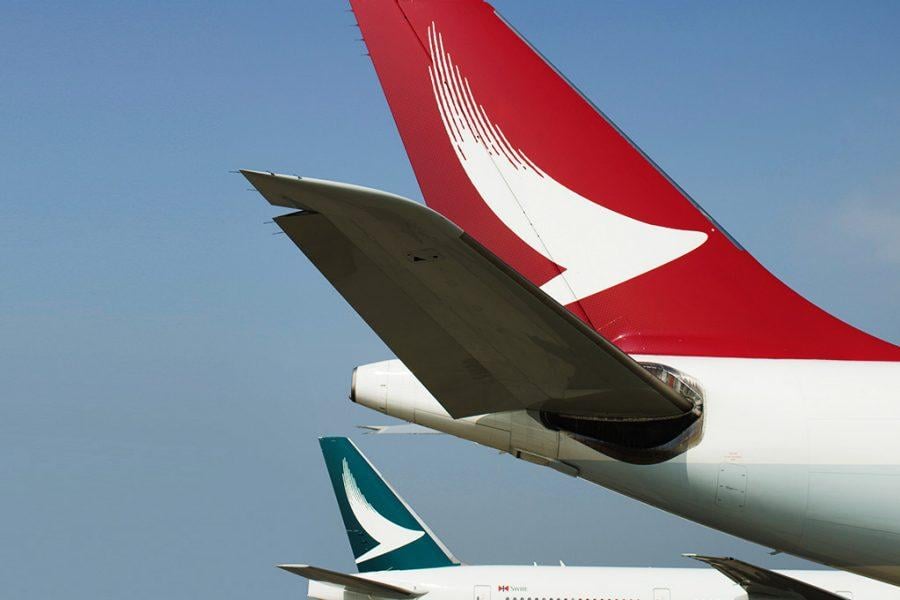
Cathay Pacific is confident its latest restructuring moves—including major workforce cuts and axing the Cathay Dragon brand—will allow it to reduce costs sufficiently to weather the COVID-19 crisis.
The carrier on Oct. 21 confirmed plans to reduce its workforce by 24% and introduce contract changes for other workers. It also intends to absorb the Cathay Dragon subsidiary into the mainline operation. These moves are part of a restructuring effort the airline launched in response to the pandemic, and they were approved by the board on Oct. 20.
Collectively, the changes will reduce cash burn by about HK$500 million ($65 million) per month in 2021, the airline said. Its current cash-burn rate is HK$1.5-2 billion per month, which is “clearly unsustainable,” Cathay chairman Patrick Healy said during a media briefing. The restructuring will cost HK$2.2 billion.
Healy said the company believes it can operate at a sustainable level based on the restructuring moves announced, even though it expects capacity to be less than half normal levels in 2021. He stressed that the carrier’s balance sheet and liquidity remain strong thanks to the government-led recapitalization announced in June. Healy added that there are no plans for sales of any group business units.
The group will reduce its normal workforce of 35,000 by 8,500. About 2,600 roles are already vacant, attributable to hiring freezes and previous cuts, and these positions will not be filled. That means another 5,900 current jobs will be lost—or about 17% of the total staff. This comprises 5,300 jobs in Hong Kong and 600 in other countries.
In a further breakdown of the 5,300 Hong Kong positions, Cathay said they include about 4,000 of the group’s cabin crew, 600 pilots, and 700 airport ground workers and head office staff. Healy said Cathay Dragon accounts for “a large proportion” of these cuts, with 2,500 pilots and cabin crew from the subsidiary losing their jobs.
Remaining staff “will be asked to transition to new conditions of service,” Healy said. This will “involve a reduction in base pay and allowances” in many cases, he said.
Cathay Dragon will cease to exist as a separate carrier. “There are substantial operational and marketing efficiencies to be gained by combining our fleets and simplifying our brand architecture in this way,” Healy said. The move will leave the Cathay group with one full-service brand and one LCC brand in subsidiary HK Express.
The aircraft from the Dragon fleet will be incorporated into the fleets of the other group airlines. Dragon has 21 Airbus A320-family aircraft and 26 A330s, although most are currently grounded because of the pandemic. Dragon’s orders for 16 A321neos will also be used elsewhere in the group, Healy said.
Cathay said the majority of the Dragon destinations—many of which are in mainland China—will be taken over by Cathay Pacific and HK Express. Necessary regulatory approvals will be sought for the switch. Healy stressed that while the group is currently operating a vastly reduced network, it intends to build the network back to its previous scale as soon as demand allows.
The carrier has previously revealed deferrals of Airbus A350 and A321neo deliveries, and Healy said there is no update on these plans. He said the carrier’s Boeing 777-9 orders have been pushed to beyond 2025, which is more specific than the airline’s previous deferral estimate.





